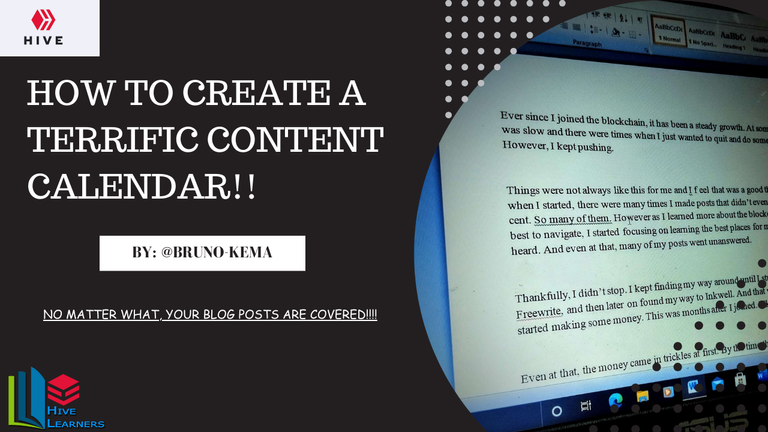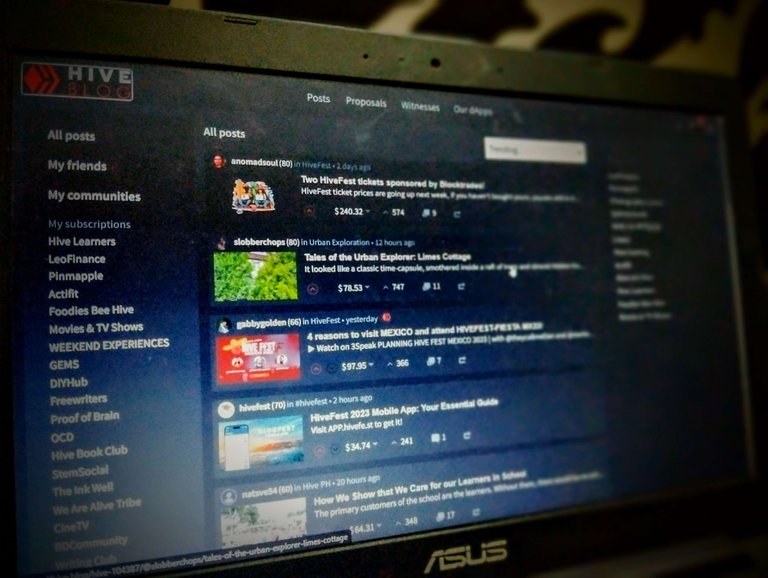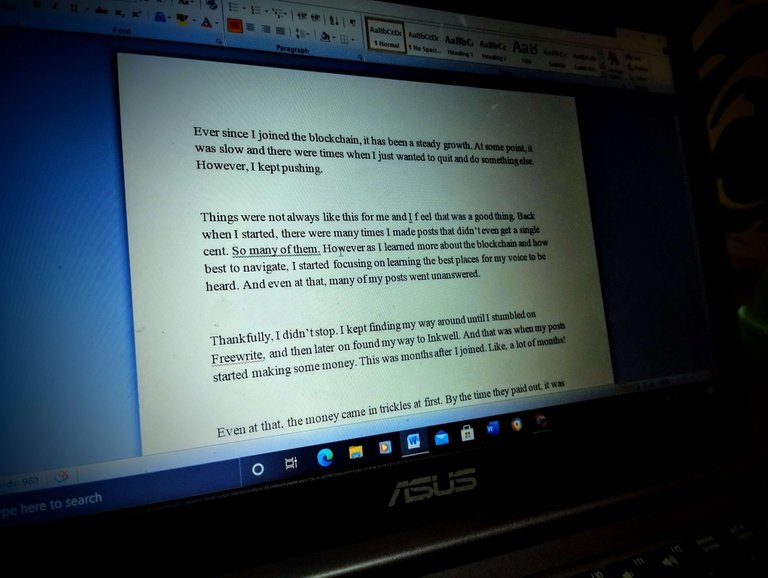

Last week, I talked about how you can make sure that no matter how things get, you’ll always have something to write about. By writing your ideas somewhere, when you want to make posts, you won’t have to rack your brains to be able to put something down because you would already have something to go with it.
But then, do you know that you can have content ideas locked down for up to even a month? Depending on the frequency of the posts you make, you can have ideas for every day that you would come online to make a post. And seeing how you would plan everything out, you could make them as unique as possible.

This is called having a content calendar. With something like this, you’ll always have something to write about and one of the beautiful things about it is the fact that you would have time to adequately prepare for each content before you make them. If you need special pictures to be taken, you’ll take them well in time before the actual posts get made. All this, so that when the day for each idea comes, you’re up and ready to go. A blogger with a content calendar will always have something to blog about.
But then, we have to be careful about how we go about this so we don’t end up repeating the same thing over and over again. When it comes to things that are that long, being unique becomes harder and harder, because over time, there will always be the possibility that you’ve treated most topics. So, you’ll have to do research for more topics so you’ll still have something different every time. Below are questions to ask yourself and tips to follow when creating a content calendar.
How Often Will You Make Posts?

This question focuses on the frequency with which you would make your posts. Will it be every day? Or every week? Or maybe twice a month? Whichever way works best for you, you need to decide this beforehand so you’ll be able to work on your content calendar better.
How you’ll go at it if you’re posting every day will be different from how you’ll go at it if you’re posting every week. Because then, the amount of ideas you would need would drop. For the former, you would need at least 30 ideas for a month, and for the latter, you’d just need 4 or 5. And when you choose to make your posts monthly, that means you’d only be making 12 in the entire year.
Deciding all this beforehand will help you. It all depends on you and knowing what you want for your blog. You also have to be ready to go through with whatever it is you’ve decided. If it’s daily, you must stick to it, and if it’s weekly, don’t slack and make it monthly instead. Once you’ve decided on this, you can ask yourself the next question.
Brainstorm Topics

These topics have to be related to your chosen niche. When you brainstorm, they’re all potential blog topics. There will be obvious topics, one that can easily come off the top of your head. And then, some will come after a bit of research.
Also, you can check out your idea bank for ideas you’ve previously jotted down. You’d gather as many of them as you possibly can and when that is done, you’ll filter the topics. Topics that look too similar will have to become one. Topics that look complex and have so many branches and subtopics would have to be divided into as many parts as possible. Each of these parts would serve as separate ideas on your calendar.
Just make sure that no matter what, two ideas won’t serve the same purpose. No matter what. Take for instance, writing a blog post about cooking jollof rice and chicken today, then tomorrow you write a post about cooking jollof rice and goat meat. It’s the same thing. No one would like that.
When Will I Make Posts?

You have to figure out when you want to make the posts. Will it be in the morning or at night? You also need to know the respective dates as well. Your posts may be relevant to particular dates probably because of what the dates could represent. It won’t be smart to make a post celebrating independence when your country’s Independence Day celebration is months away.
When you know just when and how you want your posts to be published, it’ll help you better in the making of your calendar. Besides, the calendar will serve not just as a calendar that it is, but also as an alarm. Because when you know you have to make a post in the morning, you’ll wake up faster than when you think you have the entire day to make the post.
Now, Put The Topics Up On The Calendar!
Now that you’ve got all your topics, you can simply put them all up. You can arrange them in a way that with each post you write, it gets more and more complex so that your readers who follow you will actually learn something. By the time you’ve gone from the first idea down to the last one on your calendar, there will be a marked difference.
All the topics you’ve brainstormed and filtered will go on the calendar. One after the other, depending on the way you plan to post them. Whether once a day or a week. By the time you’re done, you should have enough ideas to last you for more than a month.
Start Publishing!

You have the ideas now, so nothing is stopping you from making your posts. So get to it! If you want to make posts every day but can’t do that due to time constraints, you can make them ahead of time and schedule them to be published automatically on their scheduled dates and times.
Remember that each post must be unique and different. Also, try to follow the calendar as diligently as possible. If you miss out on one day, don’t jump over to the next one, continue with the one you should and keep posting. By the time the month is over, make sure that you’ve covered every single topic on the calendar.
In Conclusion

Now that you can make your content calendar, what are you waiting for? However, note that those ideas are not infinite, you’ll eventually run out of them. So, to prevent being without content ideas, create another calendar before your current one is finished. This was, there will always be something to fall back on.
Also, just because it’s called “calendar” doesn’t mean it works like the days in a month. It doesn’t mean that the first topic must be made on Day 1 and the seventh topic must be posted on Day 7. Unless it’s important to the blog post itself, don’t limit yourself this way. If you couldn’t publish the seventh topic on Day 7, then do so on Day 8, or even Day 9. If the posts don’t have relevance to the day they’re posted, then don’t make limitations that will only affect you in the long run.
So, my dear friends, as you go forth to create even more content, work on your calendar to make sure you never run out of ideas. May the creative juices never stop flowing in your favor.

